Grow Jackfruit Tree Backyard: Imagine stepping into your backyard and plucking a sweet, exotic jackfruit straight from the tree you nurtured yourself. Sounds like a tropical dream, right? Well, it doesn’t have to be just a dream! For centuries, jackfruit has been a staple in South and Southeast Asian cuisine, revered not only for its unique flavor and versatility but also for its impressive nutritional benefits. From savory curries to sweet desserts, this giant fruit is a culinary chameleon.
But why should you consider learning how to grow jackfruit tree backyard? In today’s world, where we’re increasingly conscious of where our food comes from, growing your own produce offers a sense of satisfaction and control. Plus, think of the bragging rights! More importantly, growing your own jackfruit tree can be a rewarding experience, providing you with fresh, delicious fruit while also contributing to a greener environment.
This DIY guide is designed to empower you with the knowledge and simple tricks you need to successfully cultivate your very own jackfruit tree, even if you’re a complete beginner. We’ll break down the process into easy-to-follow steps, covering everything from selecting the right variety for your climate to providing the proper care for a bountiful harvest. So, grab your gardening gloves, and let’s embark on this exciting journey together!
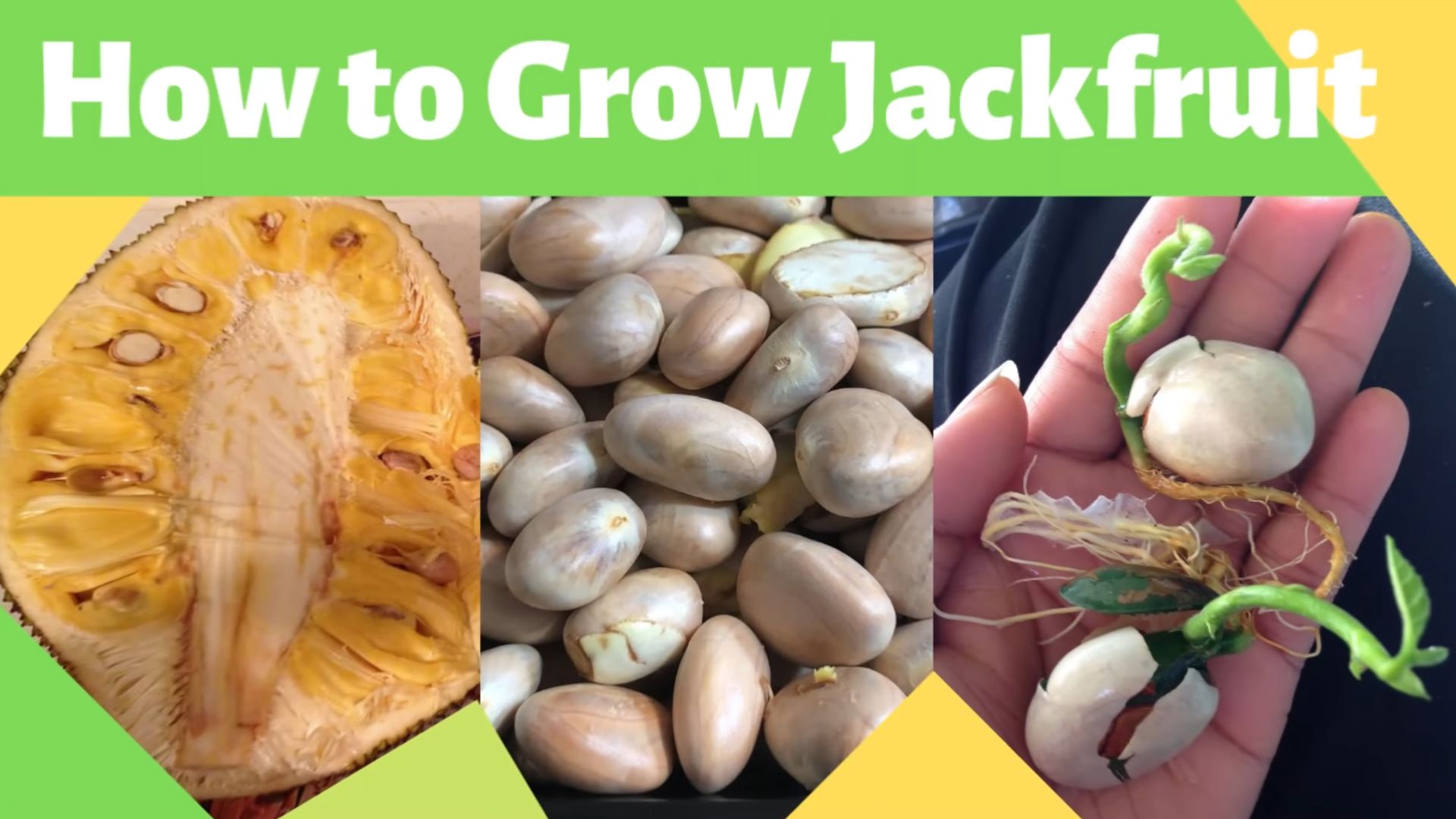
Growing Your Own Jackfruit Tree: A Backyard Adventure!
Okay, so you want to grow a jackfruit tree in your backyard? Awesome! It’s a bit of a commitment, but trust me, the reward of fresh, homegrown jackfruit is totally worth it. I’m going to walk you through everything you need to know, from choosing the right spot to nurturing your little tree into a fruit-bearing beauty. Let’s get started!
Choosing the Right Jackfruit Variety
First things first, not all jackfruit trees are created equal. Some are better suited for certain climates and have different fruit characteristics. Here’s what I’ve learned:
* Consider your climate: Jackfruit trees thrive in warm, humid climates. If you live in an area with frequent frosts, growing jackfruit might be challenging, but not impossible! You might need to consider container growing and bringing it indoors during the colder months.
* Dwarf varieties: If space is a concern, look into dwarf varieties. These are smaller trees that still produce plenty of fruit. They’re also great for container growing.
* Fruit preference: Jackfruit comes in different flavors and textures. Some are sweeter, some are firmer. Do some research and see what kind of jackfruit you enjoy eating the most.
Preparing for Planting: Location, Location, Location!
Jackfruit trees are sun-loving giants, so picking the right spot is crucial.
* Sunlight: They need at least 6-8 hours of direct sunlight per day. The more, the merrier!
* Space: These trees get BIG. Make sure you have enough space for it to grow without crowding other plants or structures. Think about the mature size of the variety you’ve chosen.
* Soil: Jackfruit trees prefer well-draining soil. They don’t like to sit in waterlogged soil, which can lead to root rot.
* Wind protection: While they need sunlight, strong winds can damage young trees. If your area is prone to high winds, consider planting your tree in a sheltered location.
Step-by-Step Planting Guide
Alright, let’s get our hands dirty! Here’s how to plant your jackfruit tree:
1. Dig the hole: Dig a hole that’s twice as wide and as deep as the root ball of your tree. This gives the roots plenty of room to spread out.
2. Amend the soil: Mix some compost or well-rotted manure into the soil you removed from the hole. This will provide extra nutrients and improve drainage.
3. Carefully remove the tree from its container: Gently loosen the roots with your fingers. If the roots are circling the pot, gently tease them apart to encourage them to grow outwards.
4. Place the tree in the hole: Make sure the top of the root ball is level with the ground.
5. Backfill the hole: Fill the hole with the amended soil, gently tamping it down as you go.
6. Water thoroughly: Give your newly planted tree a good watering to help settle the soil.
7. Mulch: Apply a layer of mulch around the base of the tree, keeping it a few inches away from the trunk. This will help retain moisture, suppress weeds, and regulate soil temperature.
Caring for Your Jackfruit Tree: The Nurturing Phase
Now that your tree is planted, it’s time to give it some TLC.
Watering
* Regular watering: Young jackfruit trees need regular watering, especially during dry periods. Water deeply and less frequently, allowing the soil to dry out slightly between waterings.
* Established trees: Once your tree is established, it will be more drought-tolerant, but still needs watering during extended dry spells.
* Avoid overwatering: Overwatering can lead to root rot, so be careful not to water too much.
Fertilizing
* Young trees: Fertilize young trees every 2-3 months with a balanced fertilizer. Follow the instructions on the fertilizer label.
* Mature trees: Fertilize mature trees once or twice a year, during the growing season.
* Organic options: Consider using organic fertilizers like compost tea or fish emulsion.
Pruning
* Shape and structure: Prune your jackfruit tree to maintain its shape and structure. Remove any dead, damaged, or crossing branches.
* Air circulation: Pruning helps improve air circulation, which can prevent fungal diseases.
* Encourage fruiting: Pruning can also encourage fruiting by allowing more sunlight to reach the inner branches.
* Timing: The best time to prune is after the harvest.
Pest and Disease Control
* Common pests: Jackfruit trees can be susceptible to pests like aphids, mealybugs, and scale.
* Natural remedies: Try using natural remedies like neem oil or insecticidal soap to control pests.
* Fungal diseases: Fungal diseases can also be a problem, especially in humid climates.
* Good air circulation: Ensure good air circulation around the tree to prevent fungal diseases.
* Fungicides: If necessary, use a fungicide to control fungal diseases. Always follow the instructions on the fungicide label.
Dealing with Common Jackfruit Tree Problems
Even with the best care, you might encounter some problems along the way. Here’s how I’ve tackled some common issues:
* Yellowing leaves: This could be a sign of nutrient deficiency. Try fertilizing your tree with a balanced fertilizer. It could also be a sign of overwatering, so check the soil moisture.
* Leaf drop: Leaf drop can be caused by stress, such as drought, extreme temperatures, or pest infestations. Make sure your tree is getting enough water and is protected from pests.
* Fruit drop: Young jackfruit trees sometimes drop their fruit prematurely. This is often due to stress or nutrient deficiency. Make sure your tree is getting enough water and fertilizer.
* Root rot: Root rot is caused by overwatering and poor drainage. Make sure your soil is well-draining and avoid overwatering. If you suspect root rot, you may need to repot your tree in fresh soil.
Harvesting Your Jackfruit: The Sweet Reward!
After all your hard work, it’s finally time to harvest your jackfruit!
* Timing: Jackfruit typically takes 3-8 months to mature, depending on the variety and climate.
* Signs of ripeness: Look for these signs of ripeness:
* The fruit will turn from green to yellowish-brown.
* The spines on the fruit will soften.
* The fruit will emit a strong, sweet aroma.
* When tapped, the fruit will sound hollow.
* Harvesting: Use a sharp knife to cut the fruit from the tree. Be careful, as the sap can be sticky.
* Enjoying your jackfruit: Jackfruit can be eaten fresh, cooked, or processed into various products. The seeds are also edible and can be roasted or boiled.
Container Growing Jackfruit: A Viable Option
If you live in a cooler climate or have limited space, you can still grow jackfruit in a container.
* Choose a large container: Select a large container with drainage holes. The bigger, the better!
* Use well-draining potting mix: Use a high-quality, well-draining potting mix.
* Water and fertilize regularly: Container-grown jackfruit trees need more frequent watering and fertilizing than trees grown in the ground.
* Provide support: As the tree grows, it may need support to prevent it from tipping over.
* Bring indoors during winter: If you live in a cold climate, bring your container-grown jackfruit tree indoors during the winter months. Place it in a sunny location and water sparingly.
Propagating Jackfruit: Expanding Your Orchard
Want more jackfruit trees? Here are a couple of ways to propagate them:
* Seed propagation: You can grow jackfruit trees from seeds, but the resulting trees may not be true to type. This means the fruit may not be the same as the parent tree.
1. Extract seeds from a ripe jackfruit.
2. Wash the seeds thoroughly and let them dry for a day or two.
3. Plant the seeds in a well-draining potting mix.
4. Keep the soil moist and warm.
5. The seeds should germinate in a few weeks.
* Grafting: Grafting is a more reliable way to propagate jackfruit trees. It involves joining a scion (a cutting from a desired variety) to a rootstock (a seedling tree). This ensures that the resulting tree will produce fruit that is true to type. Grafting is a bit more complex and might require some practice or guidance from an experienced gardener.
Jackfruit Recipes: From Savory to
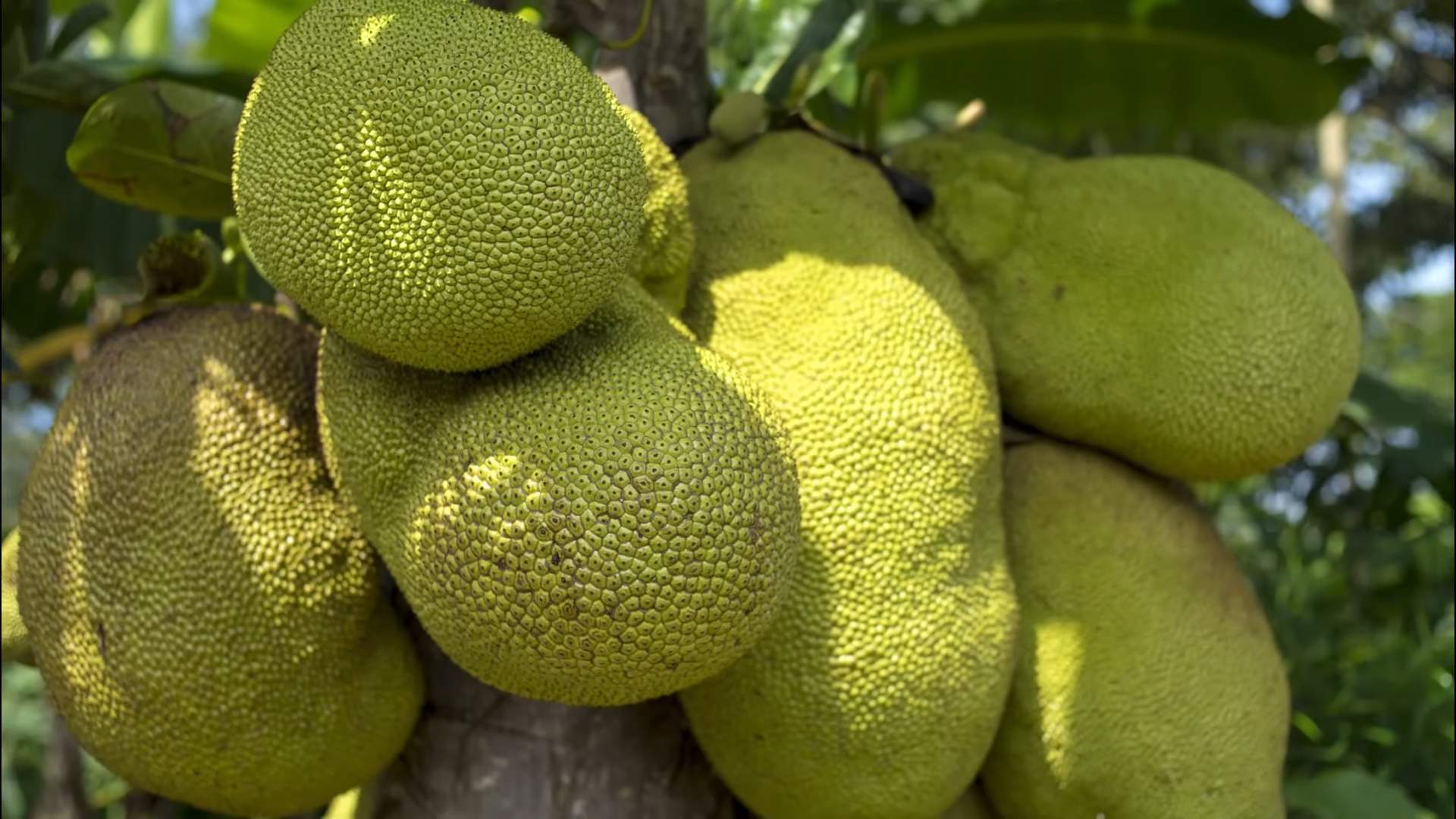
Conclusion
So, there you have it! Growing your own jackfruit tree in your backyard might seem like a tropical dream, but with a little patience, the right knowledge, and a dash of dedication, it’s entirely achievable. We’ve walked you through the essential steps, from selecting the perfect variety suited to your climate to nurturing your young sapling into a fruit-bearing marvel.
Why is this DIY trick a must-try? Beyond the sheer satisfaction of harvesting your own exotic fruit, growing a jackfruit tree offers a multitude of benefits. You’ll have access to fresh, delicious jackfruit whenever you crave it, avoiding the often-high prices and limited availability in stores. Plus, you’ll be contributing to a greener environment, providing shade and habitat for local wildlife. And let’s not forget the bragging rights! Imagine the look on your neighbors’ faces when you tell them you grew your own jackfruit!
But the journey doesn’t end here. Feel free to experiment with different techniques. For instance, if you live in a cooler climate, consider growing your jackfruit tree in a large container that can be moved indoors during the winter months. This allows you to enjoy the benefits of homegrown jackfruit even if you don’t have the ideal tropical conditions year-round. Another variation involves grafting different jackfruit varieties onto a single tree, potentially allowing you to harvest multiple types of jackfruit from the same plant. This is a more advanced technique, but it can be incredibly rewarding for experienced gardeners. You can also explore different fertilization schedules and soil amendments to optimize growth and fruit production. Some gardeners swear by adding compost tea regularly, while others prefer slow-release organic fertilizers.
The key is to observe your tree closely and adjust your approach based on its specific needs. Remember, every backyard is unique, and what works for one gardener might not work for another.
We’ve provided a solid foundation for your jackfruit-growing adventure, but the real learning happens through experience. Don’t be afraid to make mistakes – they’re all part of the process. And most importantly, don’t give up! Growing a jackfruit tree takes time and effort, but the rewards are well worth it.
We are confident that with the information provided, you can successfully grow jackfruit tree in your backyard.
Now, it’s your turn! We encourage you to take the plunge and embark on this exciting journey. Plant that seed, nurture that sapling, and watch your jackfruit tree flourish. And once you’ve harvested your first jackfruit, be sure to share your experience with us! We’d love to hear your stories, see your photos, and learn from your successes (and even your failures). Share your tips, tricks, and variations in the comments below. Let’s create a community of jackfruit enthusiasts and help each other grow the best jackfruit trees possible! Happy gardening!
Frequently Asked Questions (FAQ)
Q: What is the best climate for growing a jackfruit tree?
A: Jackfruit trees thrive in warm, humid climates with temperatures consistently above 60°F (15°C). They are best suited for USDA hardiness zones 9b through 11. While they can tolerate brief periods of cooler temperatures, prolonged exposure to frost can damage or even kill the tree. If you live in a cooler climate, consider growing your jackfruit tree in a container that can be moved indoors during the winter.
Q: How long does it take for a jackfruit tree to bear fruit?
A: The time it takes for a jackfruit tree to bear fruit depends on several factors, including the variety, the age of the tree when planted, and the growing conditions. Generally, seedling-grown trees can take 5-7 years to produce fruit, while grafted trees may start bearing fruit in as little as 3-4 years. Providing optimal growing conditions, such as well-drained soil, adequate sunlight, and regular fertilization, can help accelerate the fruiting process.
Q: What type of soil is best for jackfruit trees?
A: Jackfruit trees prefer well-drained soil that is rich in organic matter. They can tolerate a wide range of soil types, but they perform best in slightly acidic to neutral soil with a pH between 6.0 and 7.0. Avoid planting jackfruit trees in heavy clay soils that retain too much water, as this can lead to root rot. Amend the soil with compost, manure, or other organic matter to improve drainage and fertility.
Q: How often should I water my jackfruit tree?
A: Young jackfruit trees need regular watering, especially during the first few months after planting. Water deeply whenever the top inch of soil feels dry to the touch. As the tree matures, it becomes more drought-tolerant and requires less frequent watering. However, it’s still important to provide adequate moisture during dry spells, especially during the fruiting season. Avoid overwatering, as this can lead to root rot.
Q: What kind of fertilizer should I use for my jackfruit tree?
A: Jackfruit trees benefit from regular fertilization, especially during the growing season. Use a balanced fertilizer with a ratio of 10-10-10 or 14-14-14. Apply the fertilizer according to the manufacturer’s instructions, typically every 2-3 months during the growing season. You can also supplement with organic fertilizers, such as compost, manure, or compost tea. Avoid over-fertilizing, as this can damage the tree.
Q: How do I protect my jackfruit tree from pests and diseases?
A: Jackfruit trees are generally resistant to pests and diseases, but they can be susceptible to certain problems, such as fruit rot, stem rot, and mealybugs. To prevent these problems, ensure good air circulation around the tree, avoid overwatering, and remove any dead or diseased branches. If you notice any signs of pests or diseases, treat them promptly with appropriate insecticides or fungicides. Organic options like neem oil can be effective for controlling many common pests.
Q: Can I grow a jackfruit tree in a container?
A: Yes, you can grow a jackfruit tree in a container, especially if you live in a cooler climate. Choose a large container with drainage holes and use a well-draining potting mix. Dwarf varieties of jackfruit are best suited for container growing. Be sure to provide adequate sunlight, water, and fertilizer. You may need to repot the tree every few years as it grows larger. During the winter, move the container indoors to protect the tree from frost.
Q: How do I harvest jackfruit?
A: Jackfruit is ready to harvest when it emits a strong, sweet aroma and the spines on the fruit become softer and more widely spaced. The skin of the fruit may also change color from green to yellowish-green. Use a sharp knife to cut the fruit from the tree, leaving a short stem attached. Be careful when handling jackfruit, as it contains a sticky latex. Wear gloves and apply oil to the knife to prevent the latex from sticking.
Q: What can I do with jackfruit?
A: Jackfruit is a versatile fruit that can be used in a variety of dishes. Young, unripe jackfruit has a neutral flavor and a meaty texture, making it a popular meat substitute in vegetarian and vegan cuisine. It can be used in curries, stews, tacos, and sandwiches. Ripe jackfruit has a sweet, tropical flavor and can be eaten fresh or used in desserts, smoothies, and jams. The seeds of jackfruit are also edible and can be roasted or boiled.


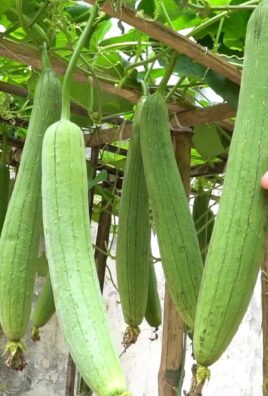
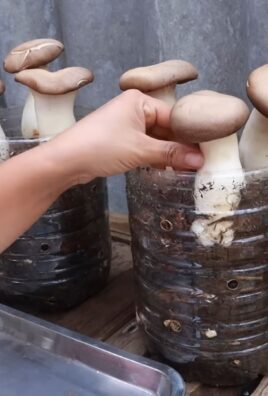
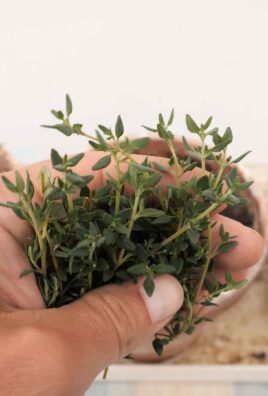
Leave a Comment